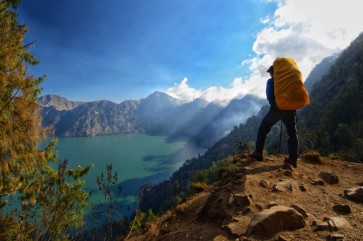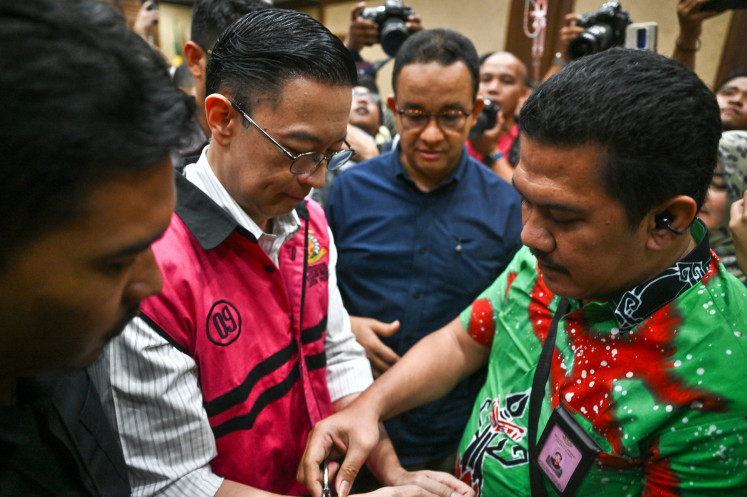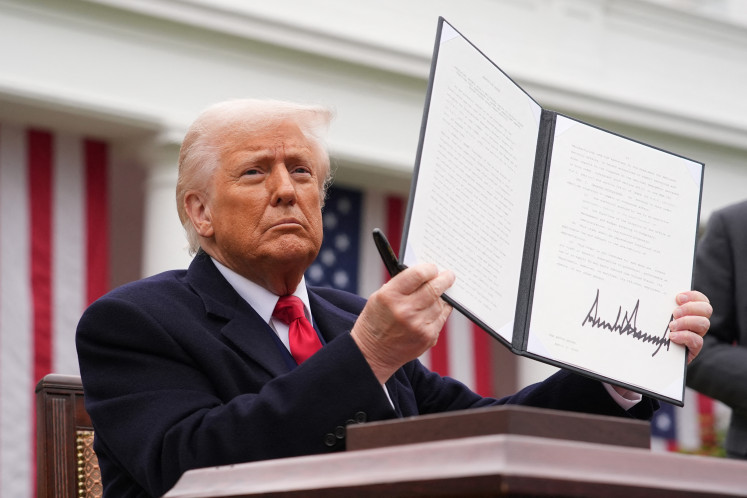Popular Reads
Top Results
Can't find what you're looking for?
View all search resultsPopular Reads
Top Results
Can't find what you're looking for?
View all search resultsPertamina uses new tech to cut production costs at Mahakam
Oil and gas company Pertamina Hulu Mahakam (PHM), a subsidiary of state-owned energy holding company Pertamina is developing new technologies in reducing exploration and production costs to maintain its production at the Mahakam block in East Kalimantan
Change text size
Gift Premium Articles
to Anyone
O
il and gas company Pertamina Hulu Mahakam (PHM), a subsidiary of state-owned energy holding company Pertamina is developing new technologies in reducing exploration and production costs to maintain its production at the Mahakam block in East Kalimantan.
PHM general manager John Anis said the company, which operates the Mahakam block in East Kalimantan province, was experimenting with two technologies that, combined with other innovations, were expected to reduce next year's well-related costs by up to 40 percent for onshore exploitation and 50 percent for offshore exploitation.
“By lowering operating costs, we ensure small oil wells will remain economical, so we can boost profits and [production] volume,” he told reporters in Jakarta on Monday.
Exploration and production costs at the Mahakam block are generally higher than other oil and gas wells as oil and reserves in the block are confined in thousands of small, isolated, underground pockets. This means that PHM has to continually drill new wells to maintain its production.
To cope with the rising costs, PHM has been testing since January a hydraulic working unit (HWU) to replace a conventional oil rig in small oil wells in the Mahakam block. Using the hydraulic working unit costs the company US$340,000, or 37 percent of the cost of making an oil rig.
John added that the reduction in drilling costs accounted for between 7 and 13 percent of total exploration and exploitation costs. Going forward, the company plans to use HWUs on more oil wells and on drilling operations.
PHM is also slated later this year to begin using a locally produced drilling mud, named Smooth Fluid 05 (SF-05), instead of its previous imported drilling mud. The replacement is expected to save the company Rp 200 billion ($14.2 million) each year.
John said the company would first test the new drilling mud, which is produced by a Pertamina-owned refinery in Balikpapan city, on five wells in the Mahakam block.
The company had drilled 78 wells as of August and plans to drill between 118 and 120 wells by year end.
“The fluid will be gradually shipped to us starting in October with 700 kiloliters, then 400 kl in December and the remaining 400 kl in February 2020,” said John, adding that if test results proved positive, the company would buy up to 1000 kl of fluid each month.
PHM’s switch to the new drilling mud is also at the behest of Energy and Mineral Resources Ministerial Regulation No. 15/2013 on using domestically produced products for oil and gas activity.
PHM has been widely criticized for declining production from Mahakam ever since the state-owned company took over last year the 53-year-old block from France’s Total E&P Indonesie and Japan’s Inpex Corporation.
PHM’s oil production hit 34,680 barrels per day (bpd) in June, which is lower than production last year at 42,978 bpd, according to Upstream Oil and Gas Regulatory Special Task Force (SKKMigas) data.
Pertamina said in a statement dated Sept. 5 that PHM’s gas production in July hit 700 million standard cubic feet per day (mmscfd), “which has been sustained since February 2019 and will be sustained until the end of the year”.
However, PHM is mainly under fire because its oil production target is only 65 percent of the government’s production target of 50,400 bpd and gas production is only 63 percent of the targeted 1,110 mmscfd, as stipulated in the annual state budget.
The Energy and Mineral Resources Ministry has revised Indonesia’s oil lifting target for next year to 755,000 bpd, up 2.86 percent from an initial target of 734,000 bpd. The gas lifting target remains unchanged at 1.19 million barrels of oil equivalent per day (boepd).
If Pertamina keeps failing to meet its own targets, it will impact the country’s state revenues badly. This year the state coffers are supposed to pocket at least Rp 159.8 trillion in nontax revenues, based on the assumption that the price of oil would be $70 per barrel.
“The planning needs to be improved because very often the targets can’t be met [by Pertamina]. If the shortfall is significant then the impact on the state revenue isn’t good,” Pri Agung Rakhmanto, a researcher with a Jakarta-based energy think tank, the ReforMiner Institute, told The Jakarta Post in a previous interview on May 7.










